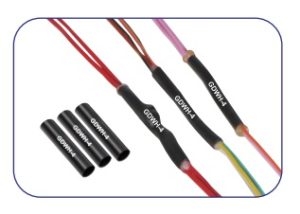
Wire harnesses in varied products have to bear tough operating environments and extreme temperatures. Wire harness protection tube offers an additional insulation layer and protection from chemicals, heat, abrasion, moisture, vibration, fluids and electromagnetic interference.
There are several options available in the context of wire harness protection products and some of the factors that determine the choice include cost, application and performance requirements. Before selecting a wire harness protection product it is essential to know exactly the operating setting of the wire harness as only then you can get a right fit of the product.
Each of the options provides varied pros and cons; some of them are detailed below:
Heat shrink tubing: This offers a snug wrap around wires smoothing out uneven surfaces and providing electrical and thermal insulation. The adhesive layered variety provides added protection against chemicals and moisture that cause corrosion of the wire harness components. A heat gun is required for application and this increase the production time. It is also tedious to use for an entire harness.
Spiral wrap tubing: This comes in polyethylene and polyamide material and has several color choices on offer. For example, high-voltage applications normally use orange color and so on. It allows the wires or cables to exit or enter the harness covering at varied points.
Sleeving: Wire bundling can be quickly and easily done through wrapable or expandable sleeving. This method is flexible besides offering ease of installation. A popular choice in this is that of the lightweight and durable braided polyethylene sleeving. Repeated flexing of cable and wire assemblies is possible without causing damage.
Split loom tubing: The plastic tubing is normally composed of polyethylene, polyamide or polypropylene. Insertion of wires or cables is facilitated due to the presence of slit on the sides which closes on completion of the installation process. This avoids the requirement of heat shrinking or spot taping the ends and thus reduces the production time. But handling is a bit cumbersome and this option does not provide compression of the wiring.
Tape: Pressure-sensitive tapes which are single coated and comprise of varied backing substances are available in the market. Some of the backing substances include felt, cloth, foil, foam or PVC which is the most commonly used option. Taping of the wire harness is done manually or through automated systems. However, use of tapes reduces the harness’ flexibility and hence the resulting stiffness can cause problems.
Amongst all of them, heat shrink tubing is the most commonly used wire harness covering in today’s times. Most of the manufacturers hold stocks of varied cable accessories like heat shrinkable pipeline joint sleeve and others needed for 66kv termination as well as other cable termination kits.
The type of wire harness protections differ from industry to industry depending largely on the manufacturers and the type of industrial segment. This is because each of the products caters to the specific needs of the applications in the varied industry alongside providing the required protection and flexibility in the applications.
In any case, all demands of the varied industrial applications have to be fulfilled by using products from reputed manufacturers. This alone guarantees the quality of the products and long lasting life.